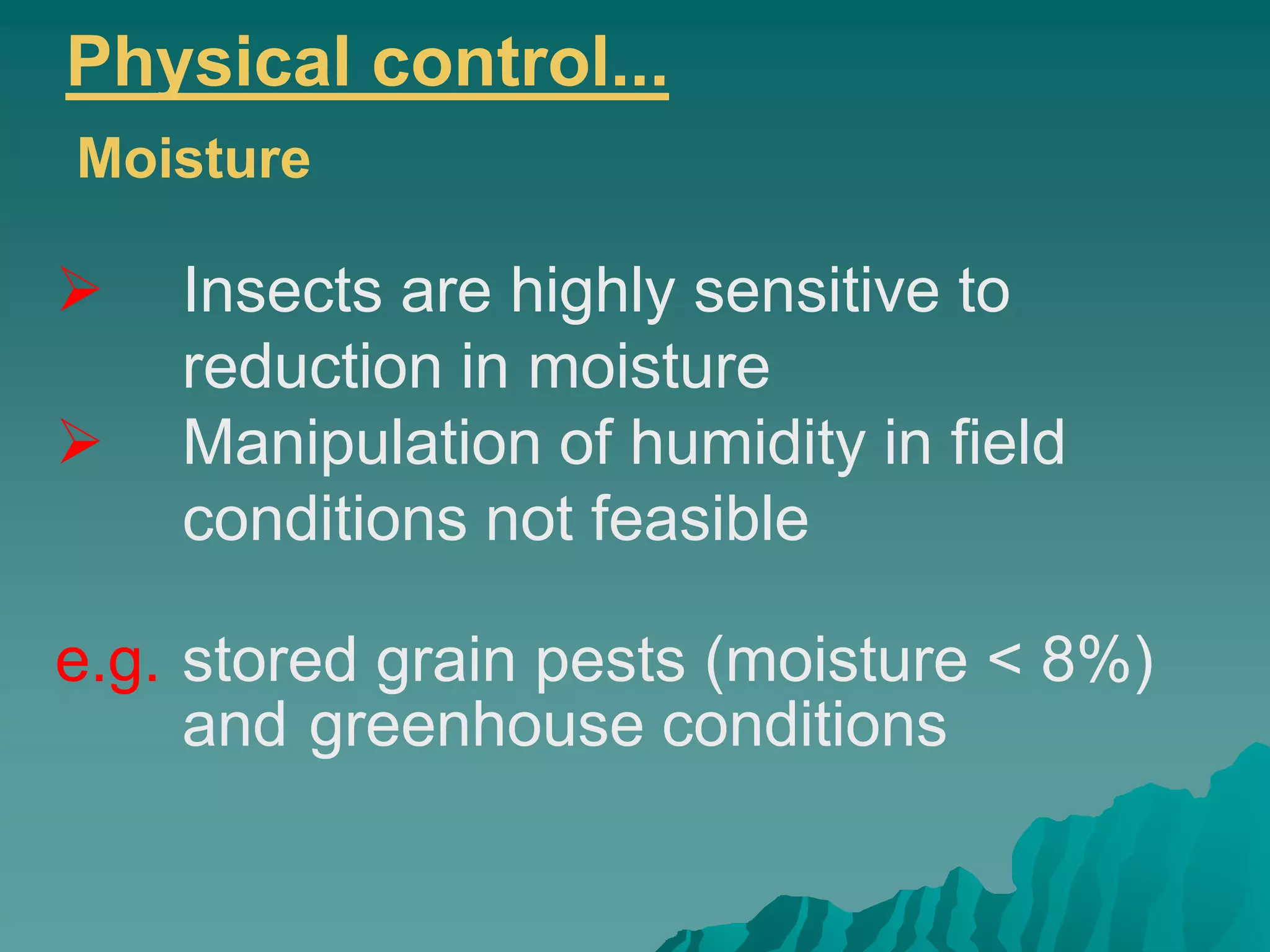This document discusses various methods for managing insect pests, including legislative, cultural, physical, biological, and chemical controls. It describes in detail several cultural control methods like tillage, clean seed, irrigation, and crop rotation. Legislative control involves laws around plant import/export and pesticide regulation. Physical control uses factors like heat, cold, and light traps. Biological control utilizes beneficial insects like parasites, parasitoids, predators, and pathogens that naturally control pest populations. The document provides examples for each control method.





















































